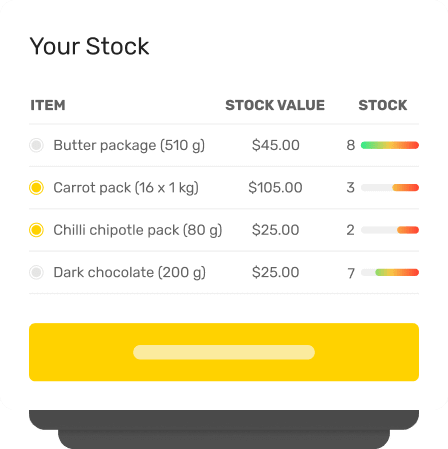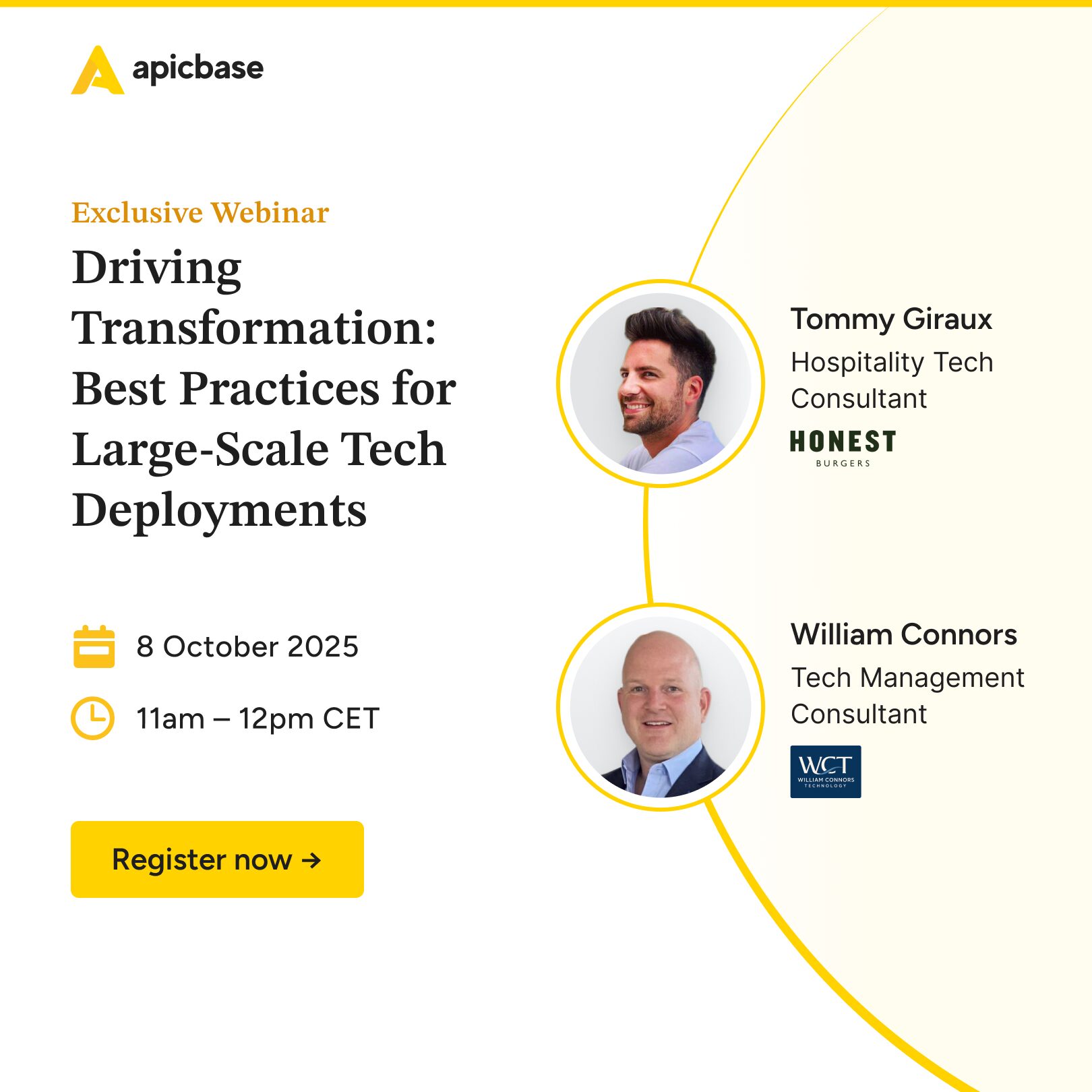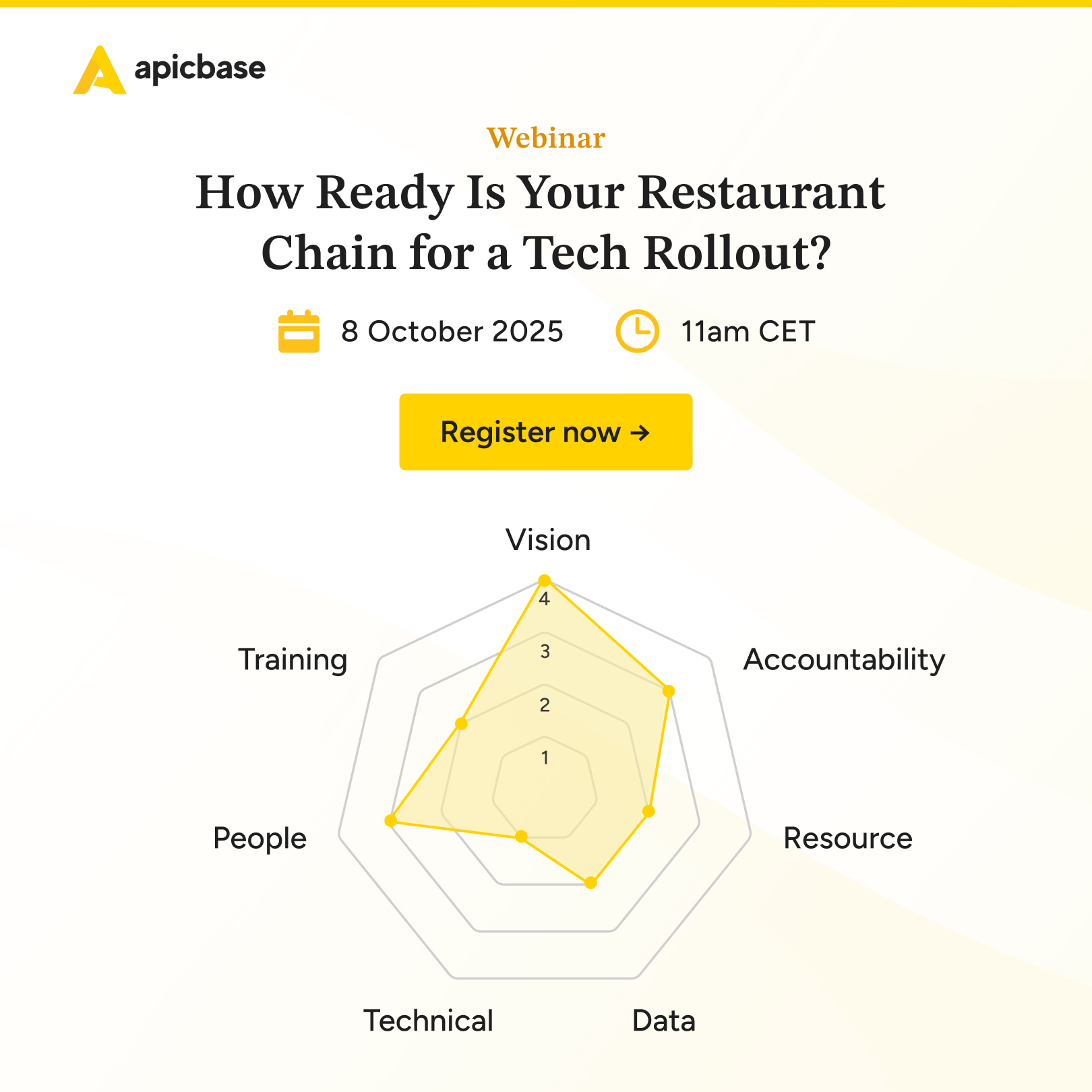What’s cheaper & easier to set up than a regular restaurant AND also cost-efficient AND kind of a smart move considering the topsy-turvy global situation (made more complicated for restaurateurs by shifting consumer habits)?
If you’ve answered a hotdog stand cloud kitchen, you’re right.
A cloud kitchen is an age-old (but still-developing) business model. Also known as virtual, dark, or ghost kitchen, it can offer onsite dining, but it’s more geared toward delivery and/or take-out. True ghost kitchens don’t serve patrons on the premises. Instead, they are solely delivery-oriented (with some offering pick-up), often partnering with service providers such as Deliveroo, UberEats, or Glovo.
Yes, a ghost kitchen can be a lucrative business… but only if you know how to set it up AND run it the right way.
That’s why, in this post, I want to run through a couple of ghost kitchen best practices.
If you’re considering opening up new income streams (either for your existing dine-in restaurant or a brand new cloud kitchen operation), these are some of the nails you need to hit on the head.
Ghost kitchen best practices are:
- Optimise kitchen processes for take-out & delivery
- Design a delivery-friendly menu (with items that can travel)
- Use real-time data & insights to make decisions
- Automate processes & integrate ordering, delivery & management
- Partner with multiple delivery services
- Prepare a robust digital marketing plan
- Get serious about training, food prep & packaging

Ready to learn how this collection of best practices can help you run a profitable cloud kitchen?
Let’s dig in.
Optimise Your Kitchen Processes for Take-Out & Delivery
If you’re adding a delivery option to your existing operation, it’s tempting to leave the production line as is.
Because… a kitchen is a kitchen, right?
Yes and no.
For things to roll smoothly in a cloud kitchen, you need to tweak some processes and rebuild others from the ground up.
You want to do that early on, following some of the cloud kitchen best practices. This will ensure that there’s less rehauling or pivoting (and unnecessary expenses) down the road.
Those best practices include:

Offer take-out to willing customers — before optimising anything, test the waters. Create a strong online campaign centring on several select dishes. Customers can pick them up as they head on their lunch break, or drive home from work. Run with this for a few weeks to gauge the level of interest before committing to a new business model.
Separate dine-in and delivery & take-out production lines — while you don’t have to separate dine-in and delivery production lines physically, you’ll want to make sure that you have dedicated staff working on both sides.
Why is this important? Well, two reasons:
a) a separate delivery production team means your dine-in guests won’t be affected by a rush of orders (as well as shorter delivery time), and;
b) there’ll be a significant difference between your dine-in and take-out menus and processes. You want your staff focused on one thing to minimise mistakes.
Create a dedicated pick-up area for deliveries — your dine-in guests are paying for an experience. And that experience shouldn’t include being bumped into by couriers with huge Wolt or Glovo boxes strapped to their backs. If possible, have a designated pick-up area that doesn’t require couriers to enter your restaurant. If that’s not possible, have runners bring out delivery orders.
Invest in appropriate kitchen equipment — a dine-in kitchen will often use two stoves for everything — veggies, chicken, roasts, etc. However, on the delivery side, volumes might be big enough to merit a rotisserie. Or a commercial-grade vegetable steamer. Take a good, hard look at your order numbers, and figure out if these investments can help you take your delivery game to the next level.
Make your packaging work for you — if you deliver an experience in addition to food, customers are more likely to come back for more. Consider investing in branded packaging to stand out from your competition. Include a hand-written ‘Thank You’ note with the order. Or throw in a Nutella-packed pancake freebie. People remember that.
Recommended Resource
Purpose-Build Your Delivery Menu
I have yet to order ramen that travels well for 20 minutes or more on a scooter.
Yet, I keep trying… and I’m sympathetic towards all cloud kitchen operators who stick with the offer, despite less-than-ideal results.
But not everyone cares (like I do) that these items are tough to deliver. And they will penalize you for trying (and not really delivering).
So make sure that you create a thought out, practical, and ‘travels-well’ menu.
What does this mean in reality?
It means focusing on quick-to-prepare, hard-to-ruin dishes such as sturdy meat cuts that can be tin-foil wrapped. Solid side-dishes that won’t ooze out of their containers during transport. And put-together-at-home items (such as the Vietnamese pho) that the customer can finalise when the order is delivered.
One big benefit of using this approach is that you’ll end up with ingredients that can hold. You can now order ingredients in bulk (and cheaply), without risking too much waste that would eat into your bottom line.
Let Real-Time Data Guide Your Decisions
While it’s true that cloud kitchens are, in general, less costly to set up than dine-in operations, it’s also true that there’s always fine-tuning to be done if you want to grow that bottom line.
Real-time data and actionable insights (and how you use them) are what make or break a purpose-built cloud kitchen operation.
(Don’t get me wrong — they are equally important for dine-in operations. It’s just that you have a bit more wiggle room on the profit-growing side).
So if you want to run a cloud kitchen (and run it well), you need to focus on the numbers.
This means that you will need to work with relevant numbers and insights— and then use the data to tweak everything from staffing to menu engineering.

- Purchasing based on historical sales trends — ordering non-perishables in bulk can help you get better deals. It can also leave you with storage rooms full of canned tomato sauce. Use inventory turnover ratio and days’ sales in inventory calcs to figure out what’s overstocked, and then adjust orders until you have the right balance of savings and ingredients.
- Staffing based on peak order time data — look at your sales data to figure out when you need all hands on deck. For the most part, dine-in and order peak times coincide, but don’t forget that major televised events (or a couple of rainy days) can put pressure on your delivery production line. Plan accordingly to minimise wait times on both ends.
- Menu engineering based on individual dish ratings — not everything you put out there is going to be a best-seller, so don’t get hung up on an idea that’s costing you money. Look at the data, double down on your cash cows, and 86 dishes that are underperforming. You’ll see your food cost go down as you get a better handle on controlling food waste.
Recommended Resource
Skip Error-Prone DIY Maths
Apicbase crunches the numbers for you, helping you streamline your ordering process until you’re left with optimised stock & dialled-in savings.
Automate & Integrate Like a Pro
Foodora, Deliveroo, UberEats, Doordash, Wolt, Glovo… and probably several more that I’m forgetting right now.
Yeah, these are all delivery partners you will want to work with.
And while opting into all of them (especially when you’re starting out) is great for maximising exposure and growing your bottom line, things can quickly turn messy once those orders start flying in.
Juggling different apps and tablets will result in mixed up orders, late deliveries, and time wasted on entering everything into your POS.
That’s why aggregator tools (such as Deliverect) are emerging as one of the most important cloud kitchen best practices. Basically, what they do is make your life easier. An aggregator tool connects major delivery partners; delivers tickets to the kitchen, and records every transaction in your POS system.
Recommended Resource
How Apicbase & Deliverect Help You Build Your Omnichannel Strategy
Oh, and did I mention that these tools also connect to your restaurant management software?
For example, Deliverect seamlessly integrates with Apicbase, sending valuable info back that allows us to deplete your stock in real-time. This lets you stay on top of your dwindling ingredients so you can immediately:
a) update your order via the purchasing module, and;
b) remove an item from the delivery menu so you don’t tick off any customers.
Automation is the Name of the Game
Doing stuff manually takes time and results in errors. Apicbase lets you automate everything from stock-taking (down to ingredient level) to purchasing.
3 Cloud Kitchen Pitfalls You Definitely Want to Avoid
Now that I’ve covered cloud kitchen best practices, let’s take a look at some of the blunders that you need to avoid when setting up your kitchen for the delivery model.

1. Partnering With Just ONE Delivery Service
I’ve already mentioned that you should work with as many delivery partners as possible in the early stages of your cloud kitchen.
Why is that?
Three things: reach, exposure, and safety.
- Reach — one delivery partner covers one part of your town. The other one covers another. The third one covers the whole town. You want to be everywhere to maximise your reach.
- Exposure — not everyone uses the same delivery app. Some people prefer Wolt. Others UberEats. When you’re on all of them, you get more eyeballs on your offer. More eyeballs = more sales.
- Safety — let’s face it – we have no idea if most of these delivery partners are here to stay. They might be one lawsuit away from boarding up their shop. So the smart thing to do is not to put all your eggs in one basket.
Some of these delivery partners offer exclusivity deals (meaning, they take less of your money if you only work with them). In most cases, this won’t work to your advantage (because — reduced reach and exposure).
So unless you can get a really great deal (them taking 15% or less), say thanks, but no thanks.
Recommended Resource
How to Run a Successful Cloud Kitchen. Tips from seasoned operators.
2. Playing Training, Food Prep & Packaging by the Ear
Consistency.
Every cloud kitchen operator I talk to tells me they owe their success to consistency…
… food quality consistency…
… consistency in packaging…
… consistency in staff training…
You don’t get that by winging it, right?
You get that by being meticulous… having standard operating procedures for everything… making sure that everyone in your operation knows how things are done.
For example, when training new employees, don’t have them shadow someone for several days.
That’s a waste of time.
Instead, create instructional videos that show, step by step, how each menu item is created. How it’s finished. And how it’s packaged. That way, new employees can start immediately working, and ask questions only when something is not clear.
Of course, your regular staff will be there to keep an eye on things, but now they don’t have to waste so much time training a newbie. And they can get on with pushing those orders out.
Think training videos are hard? Think again.
With Apicbase, you can attach a production video to every recipe. Add step by step instructions. And upload high-res photos of finished menu items.
3. Not Preparing a Robust Digital Marketing Plan
Here’s the deal…
Right now, most restaurant operators are looking to integrate a cloud kitchen model into their business.
What this means for you is that you’re competing with dozens (if not hundreds) of service providers in your area.
Well, here’s one way to get an edge on them — get online fast, and start promoting your business.

- Set up your brand’s Facebook, Instagram, and Twitter pages — invest some money into building a following (local), and then flood the pages with images of your delicious food and raving reviews from your most loyal customers. (Learn more about social media marketing for restaurants from Jenn from SproutSocial).
- Claim all your digital listings, such as Google and Yelp — these are the two things that pop up immediately after someone types your brand name into Google search. You want to be in control there. Make sure you have the right info set up, the right images, and that you’re keeping an eye on your reviews. (Learn more about claiming your restaurant listings right here).
- Manage your online reputation — and do that by actually engaging and talking to reviewers. Even if you get an awful review, the worst thing you can do is ignore it. The second worst thing you can do is attack the reviewer. Be polite. Be respectful. Find a way to turn things around. (Learn more about responding to negative restaurant reviews — and leveraging the positive ones).
Recommended Resource: Cloud Kitchen Management Software: 17 Systems That Improve Efficiency And Profitability
Cloud Kitchens Are Here to Stay — But How Many of Them?
And how will you make sure that yours is one that does stay?
Here’s the bottom line — you have an opportunity here.
And if you focus on these best practices for operating cloud kitchens, you can 10X that opportunity.
Streamline your processes. Dial-in on your offering. Get a handle on your food costs.
Because… dark kitchen or not… it’s still a food service business. And 60% of those don’t make it past their first year.

Level-Up Your Cloud Kitchen Game
Tell us about your project and we’ll show you how to boost cloud kitchen profits with Apicbase.



